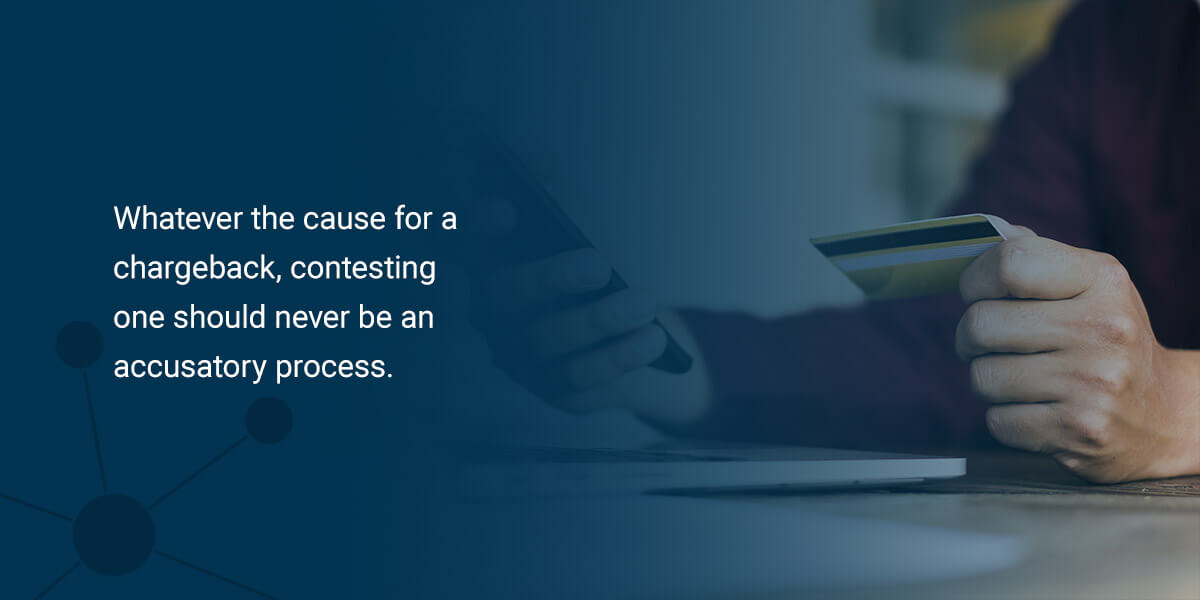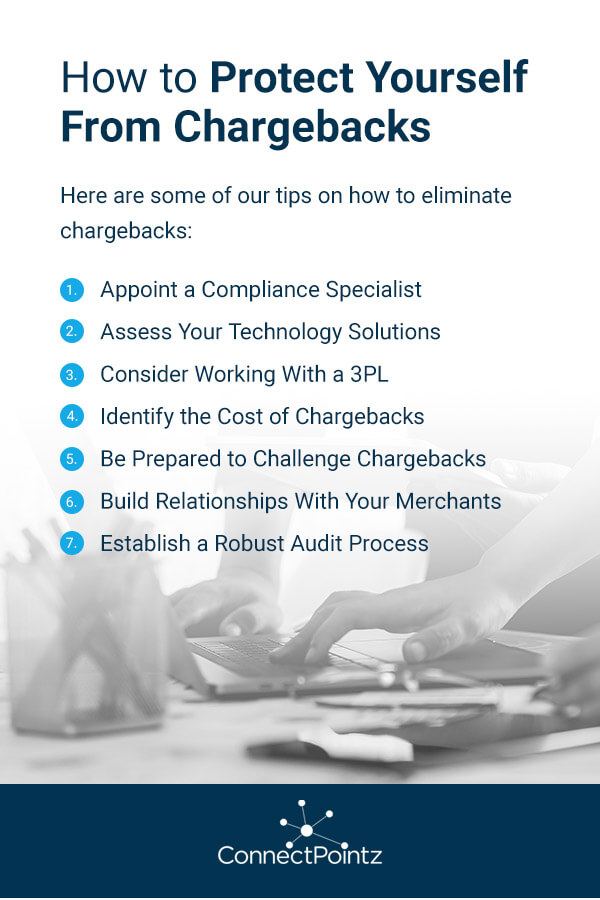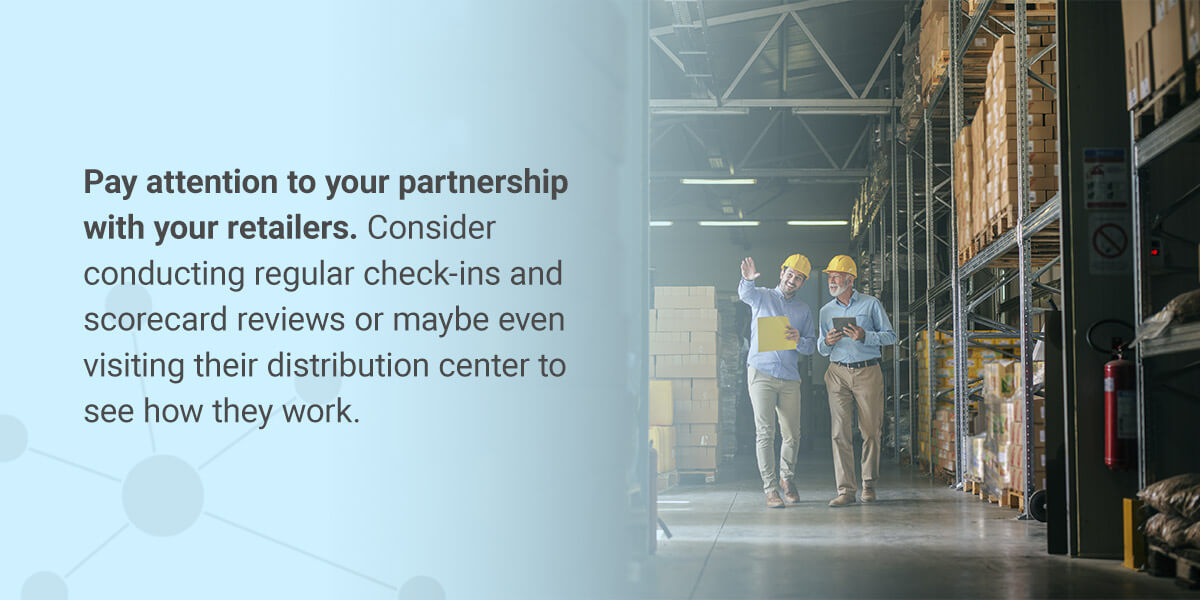If you work with large retailers or you're considering it, you need to know all about chargebacks. Retail chargebacks occur when your shipments don't meet your partners' internal requirements. With complex supply chains, these chargebacks can come from many different places, like your packaging processes, data handling practices or shipping provider. Sometimes they can even come from the retailer's distribution center.
Thankfully, there are many steps you can take to avoid chargebacks and improve your chances of successfully challenging them. Let's take a look at how to deal with chargebacks from retailers.
What Is a Chargeback?
A retail chargeback occurs when a retailer charges a merchant for noncompliant shipments. The amount might be a flat fee or a percentage of the order. That amount isn't usually requested but instead deducted from the retailer's next payment to the supplier. With high-value shipments, these costs can easily reach tens of thousands of dollars. If they occur regularly, chargebacks can significantly hurt your profitability and even jeopardize your standing with the retailer.
The Chargeback Process Explained
Chargebacks aren't just a money-grabbing move from the retailers. These fees are a way for them to recoup the costs associated with disruptions to their highly automated systems. Large retailers have thousands of suppliers and stores. Manually organizing these shipments would be impossible. They've spent significant time and money creating automated processes that keep their distribution centers moving like well-oiled machines. If your shipment interrupts those processes, they need to spend time fixing the issue. Since time is money, they charge you for these events.
The compliance process is also automated, so if you receive a chargeback, it was likely issued by an automated system that detected a problem. Their scanners may not have been able to read your barcode format, or a typo in an EDI transaction might have prevented it from being read correctly. When these errors occur, you receive a chargeback, although it may not show up until the next invoice.
What Causes Retail Chargebacks?
Knowing how to reduce chargebacks is all about finding what caused them. They can come from many different places, such as:
- EDI issues: Advanced shipping notices (ASNs) are a type of EDI and an important part of merchant relations. They're also one of the biggest reasons for chargebacks. They're necessary for planning receiving operations, finding order discrepancies and minimizing storage costs and product movement. Since modern technology has made it easy to use EDI, most retailers aren't very tolerant of these problems and can issue EDI chargebacks.
- Delayed shipments: Late product delivery can understandably cause problems for the retailer and is likely to result in a chargeback.
- Incorrectly packed shipments: Many retailers have strict packaging requirements, such as instructions for palletization, shrink wrapping and handling fragile items. Not meeting these demands can interrupt their processes and put the product at risk.
- Incorrectly labeled shipments: Labels might be improperly formatted, incorrect for the shipment or badly printed. For example, a barcode that has worn off or isn't printed in the right format can't be scanned by the retailer and requires manual intervention. Problems might come from your printing configurations, your printers or even a mismatch with the retailer's scanning system.
- Missing or substituted items: If your shipment lacks some products or you've substituted one item for another, you could receive a chargeback.
- Shipments that arrive in bad condition: Unsurprisingly, damaged products can also result in a chargeback. Since there are many players in the supply chain, you may need to prove your shipment was up to par when it left your facility, and you might need to get your shipping company involved if you need to contest this kind of chargeback.
- Shipments that lack documentation: Another source of distributor chargebacks is the documentation attached to your shipments, such as packing slips, retailer labels, bills of lading, invoices or manifests. If you're missing one of these, the retailer might charge you.
Whatever the cause for a chargeback, contesting one should never be an accusatory process. Always be civil and approach your shippers and retailers as partners working to find a solution. Stay open-minded and willing to make changes to prevent future issues.

How Do Chargebacks Affect a Business?
Chargebacks can significantly hurt your bottom line. If you have a lot of them or work with high-value shipments, they can quickly add up. Noncompliance also affects the retailer. They depend on heavily automated solutions to handle the massive volumes of products that move through the company. When your shipment requires an employee to manually address the interruption, their profits suffer, too. They need to pay for the skilled labor, any downtime the shipment has caused and impacts on their storage practices, labor organization and equipment.
You also want to consider the effects of contesting chargebacks. Many smaller suppliers are hesitant to challenge large retailers and just eat the costs as a part of doing business. Minimizing chargebacks usually calls for some compliance initiatives, like EDI management software and quality control checks. Generally, these costs are much more affordable than frequent chargebacks, but you still need to factor these expenses into your everyday operations.
Along with the expenses, chargebacks can hurt your relationship with the merchant. A history of errors and performance issues could make them see you in a different light. They may not be as inclined to work with you, which could affect your opportunity for growth and your position in negotiations.

What Happens If You Lose a Chargeback?
If you don't have enough supporting evidence to argue your case, you may lose the chargeback and need to pay it on your next invoice. From there, you'll need to make some changes to try and improve your system to prevent a similar chargeback in the future.
How to Protect Yourself From Chargebacks
Thankfully, you can prevent chargebacks with a comprehensive approach to mitigation. Here are some of our tips on how to eliminate chargebacks:
1. Appoint a Compliance Specialist
Chargebacks can come in many forms, and reducing them is almost certainly a full-time job. Suppliers typically enlist a compliance specialist for help. This person has professional experience and knowledge of disputing and avoiding chargebacks. Some activities they might tackle include:
- Disputing chargebacks with merchants.
- Improving your record-keeping system to provide more leverage during disputes.
- Compiling data to evaluate the causes of chargebacks and take corrective action.
- Improving various processes to minimize errors that cause distributor chargebacks.
- Attending merchant training sessions and seminars to boost compliance.
- Connecting with various parties throughout the supply chain to stay up-to-date on changing requirements.
2. Assess Your Technology Solutions
See if your technology is causing problems. Are you getting chargebacks because your retailer can't scan your labels? See if your printer is on the fritz or there is a disconnect between your formatting and the type of scanner they use. You might need to check your barcodes are complete and correct and that your carrier numbers are correctly formatted.
There are many different types of technology being used between you and your retailer. Include technology assessments in your quality control processes to ensure everything works as intended. Connect with your retailers and make sure you're both on the same page.
Some areas to consider include:
- EDI: Remember, EDI problems are a very common cause of chargebacks, often from ASNs. Most businesses find manual EDI transactions hard to keep up with and error-prone, especially if your business is growing or evolving. The right EDI solution can automate your transactions to minimize errors and improve efficiency as you communicate with your retailers.
- Hardware: Out-of-date or incorrectly configured hardware, such as printers, packaging equipment and scanners, can cause problems for you and your retailers. When you get new hardware, take time to ensure it works with your retailers' requirements and can be adapted if they change.
- Warehouse management system (WMS): Your WMS can make a big difference in how you meet retailer requirements by helping you sync data, connect with your partners and integrate with other platforms, such as an enterprise resource planning (ERP) tool. It can also help you implement more tools for accuracy and efficiency, like radio frequency identification (RFID) and automatic error detection.
3. Consider Working With a 3PL
A third-party logistics (3PL) provider often has more robust resources to put toward compliance. For example, small business chargebacks might be common for organizations just getting off the ground. They may not be able to invest in fancy quality control systems or costly hardware upgrades. 3PL services are dedicated to creating fulfillment services as efficiently and accurately as possible. They have robust compliance systems and personnel to handle disputes. For some businesses, working with a 3PL can be a cost-effective way to leverage those resources and improve your compliance with retailers.
When choosing a 3PL, be sure to find a partner with a strong history of compliance, and ask about their scorecards and audit practices. Look for integration with your systems that can help you stay on the same page.
4. Identify the Cost of Chargebacks
When evaluating solutions, it helps to have a definitive number to quantify the effect chargebacks have on your business. Consider the direct costs of the chargebacks themselves, as well as any additional expenses, like the cost of freight to send a shipment back to your facility or the labor required to fix issues and move products. Establishing this number can support your efforts to fight chargebacks by convincing stakeholders of the value of new resources. Whether that entails hiring a compliance specialist or implementing a new EDI system, having the hard numbers is an effective strategy.
You can usually get these values with the help of your accounting team and some estimations.
5. Be Prepared to Challenge Chargebacks
Chargebacks aren't always valid, and you may be able to get them waived if you have the right kind of proof. Photos, documentation and a strong history of compliance can help you argue chargebacks when appropriate. To put yourself in a good position for contesting a chargeback, take a look at how you record your performance. Taking photos of your shipments before they leave your facility, for instance, can help prove that you followed retailer requirements. If the shipment is affected in transit, you can turn to your shipping provider for answers.
Your retailer's documentation practices can also affect your ability to dispute a chargeback. Say you can prove you followed retailer requirements, but they don't have any proof otherwise. There's a good chance they'll drop the chargeback.
Challenging chargebacks takes time and effort, and you need the right evidence before you attempt it. Chargebacks may not appear on your invoices for a while, so retain historical logs to stay prepared.
6. Build Relationships With Your Merchants

Retailers want you to succeed. The more suppliers that are compliant with their systems, the more profitable they are. They put together detailed routing guides and training sessions to help you stay compliant. If you have issues, they'll generally work with you. Pay attention to your partnership with your retailers. Consider conducting regular check-ins and scorecard reviews or maybe even visiting their distribution center to see how they work.
These relationships include staying abreast of any updates. Create a schedule for checking on changes that may occur to retailer routing guides and review your compliance strategies.
7. Establish a Robust Audit Process
Reducing chargebacks depends on data. Once you know what you're looking for — in other words, your most frequent chargeback causes — incorporate them into an in-depth audit process. Create documentation for every retailer's unique requirements and establish how you'll meet them. Establish processes to inspect a certain percentage of your outbound shipments and make sure they meet your merchant requirements.
Some audit tasks might include validating that:
- Labels match the pallet or carton they're on.
- Relevant documentation, like packing lists and invoices, are attached to the shipment.
- Your ASNs are accurate and issued at the right time.
- Labels are in the correct position and complete.
- Pallets are organized accurately.
If you work with a 3PL, check in on them regularly and ask to see audits and scorecards. After conducting your audits, be sure to use that data to its fullest advantage. Assess common points of failure and strategize to improve performance.
Preventing Chargebacks With ConnectPointz
One of the most important factors in how you avoid chargebacks is your choice of technology. One of the most important tools, and one of the simplest to address, is your EDI platform. ConnectPointz offers complete EDI integration to help you connect to nearly any partner, including retailers, 3PLs, warehouses and enterprise software. With a centralized location for all your data and next-level automation, we can help you reduce chargebacks and optimize your operations to meet business goals.
ConnectPointz is a trusted leader in EDI integration, with custom and pre-configured solutions to fit businesses of all sizes and types. We'll work with you at every step, simplifying EDI integration and reducing chargebacks. To see how ConnectPointz can help your organization, reach out to a representative today.











































